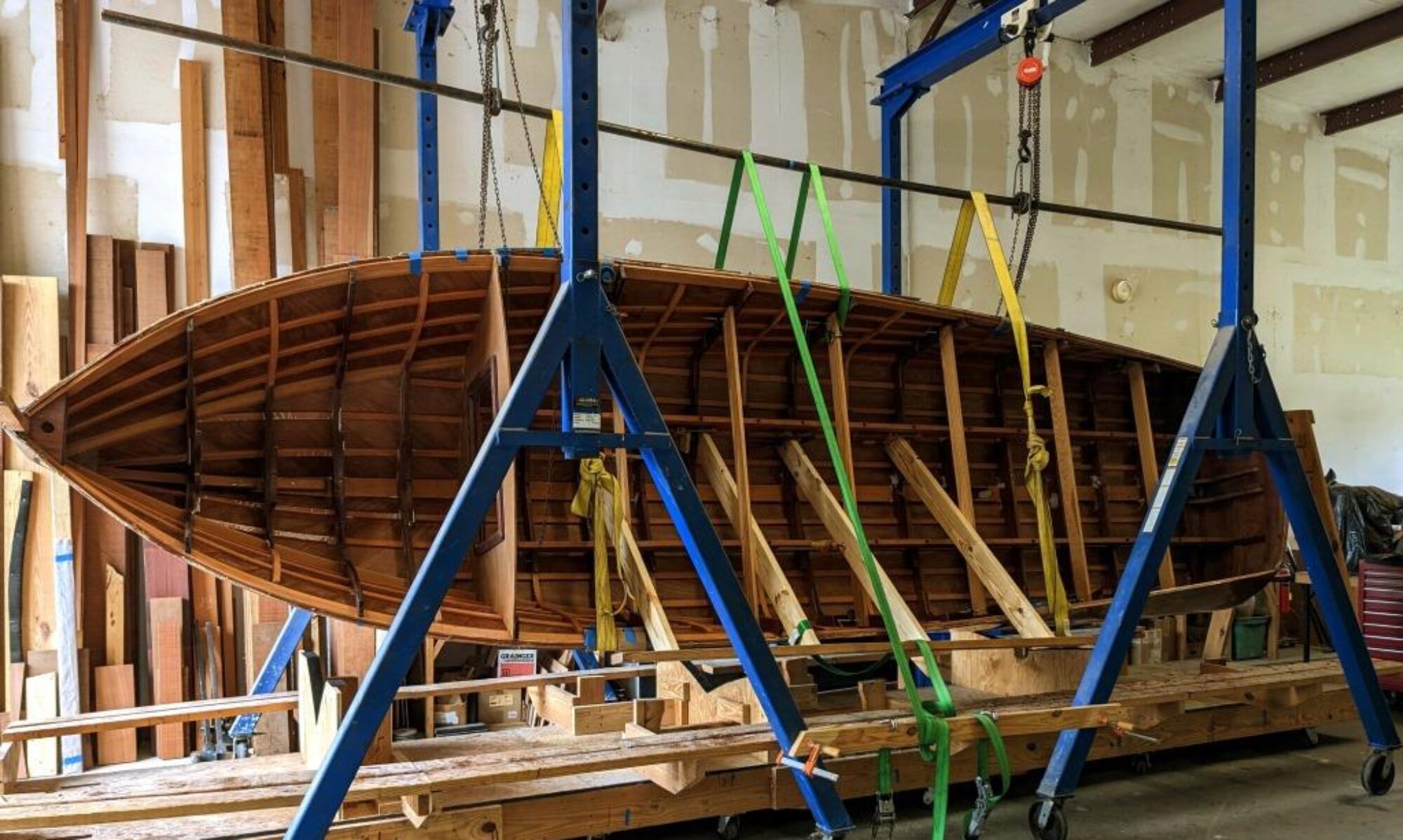
Once the inner layer was fitted and glued, it was time to start fitting the outer layer. These are 1/2″ thick mahogany planks that average about 5-1/2″ wide, though they are considerably wider forward. This is the cool stuff. We rough-cut the blanks and steamed them to the curve of the hull awhile back. See New Bottom Planks and Using the Boat as a Form. Now it’s time to fine-tune these pieces and trim them to their final shape–a process called “fitting”. That process–getting a tight, leak proof seam between two planks that run the length of the boat–involves about 3 parts science, 1 part skill and 6 parts patience. I use the “Router Method” that I described here in Replacing Topsides Planks. It’s a little more cumbersome on the bottom because the clamping devices you have to use cannot be positioned so that you can simply glide right past them with your router. You have to start and stop, then connect the line later on the workbench. But it works tolerably well.

The first plank to be fit is the Garboard. This is the plank next to the keel. On our boat, the garboard is a single plank, without a splice, that runs the length of the boat. I simply clamped it in place next to the keel rabbet, and scribed a line along it that matched the keel rabbet, then cut it to fit. Once satisfied with the fit of the edge in the keel rabbet, I used a batten to mark a fair line on the other edge that the next plank will be fit to. Then I trimmed to the line, making the first cut with my trusy jigsaw, and trimmed to the line with a bench plane. I then marked out where all the screws would be placed on the plank, clamped it back in place on the boat and drilled holes for a few locator screws to hold the plank in its exact position so that the next plank could be fit against it’s edge. These locator screws also serve as indispensable guides when you’re glueing the plank on to get the plank back in exactly the same place you had it when you fit it.
With the garboard in position, the next blank, for plank 2PF (that’s Second plank from the keel, Port side, Forward) is clamped about 5/16″ away from the edge of the garboard, and using the edge of the garboard as a guide, the router cuts an exact fit for the edge, reproducing the bevel angle as well. Then using a batten, you mark a fair line on the other edge of the plank, cut it with your jigsaw, tune it with the hand plane, fasten it in place and move on to the next one. Wash, rinse, repeat.

There are five strakes to the side, 2 planks (forward and aft) to each strake except the garboard and strake no. 5, each of which consist of a single plank. That’s 16 planks total. It’s a great day when you fit that final plank. It’s an even greater day when you have them all glued down, but that’s a story for another day.

